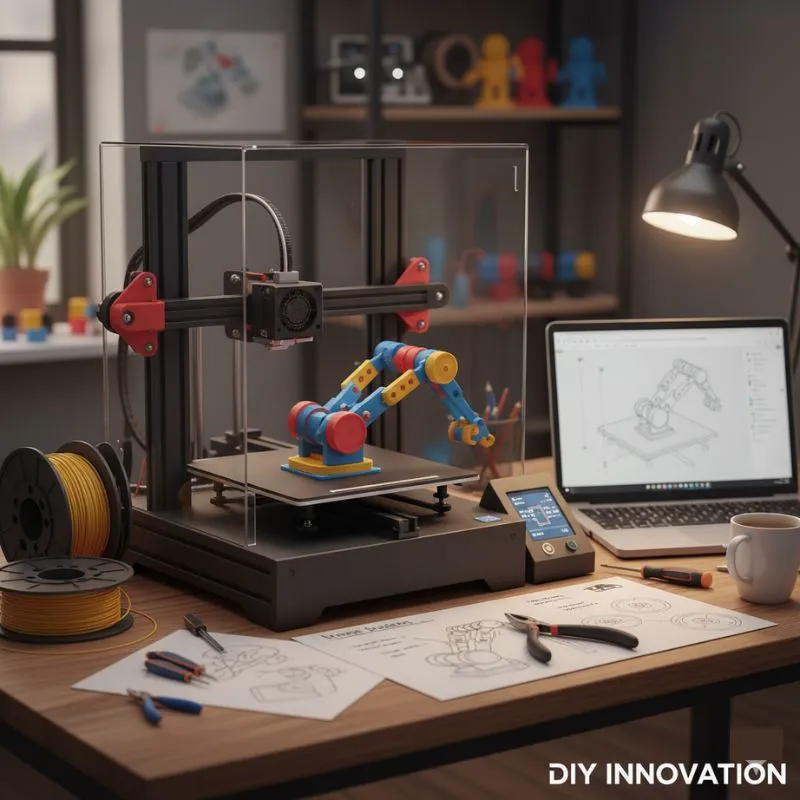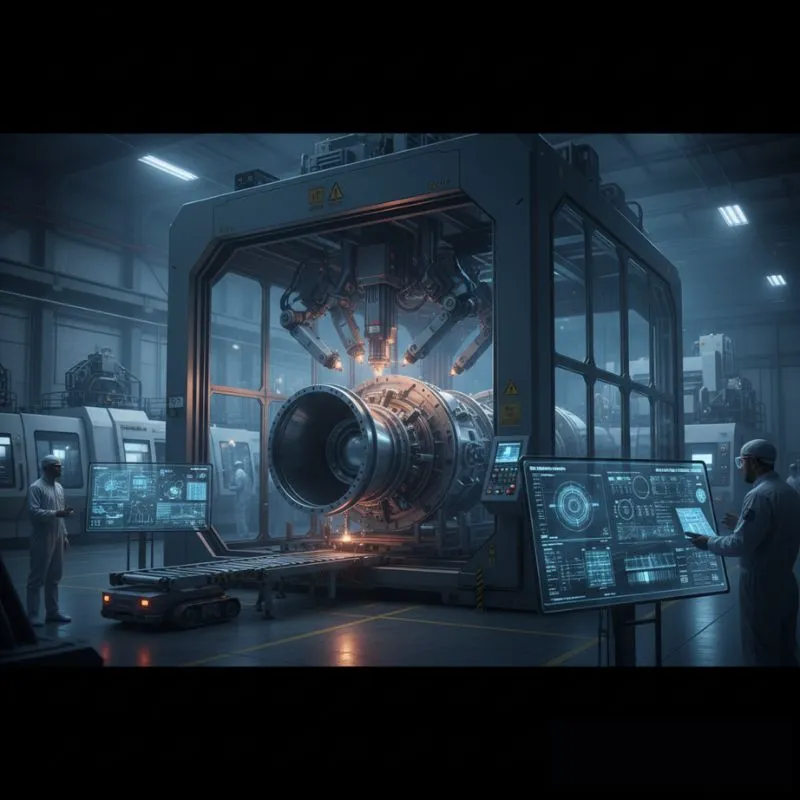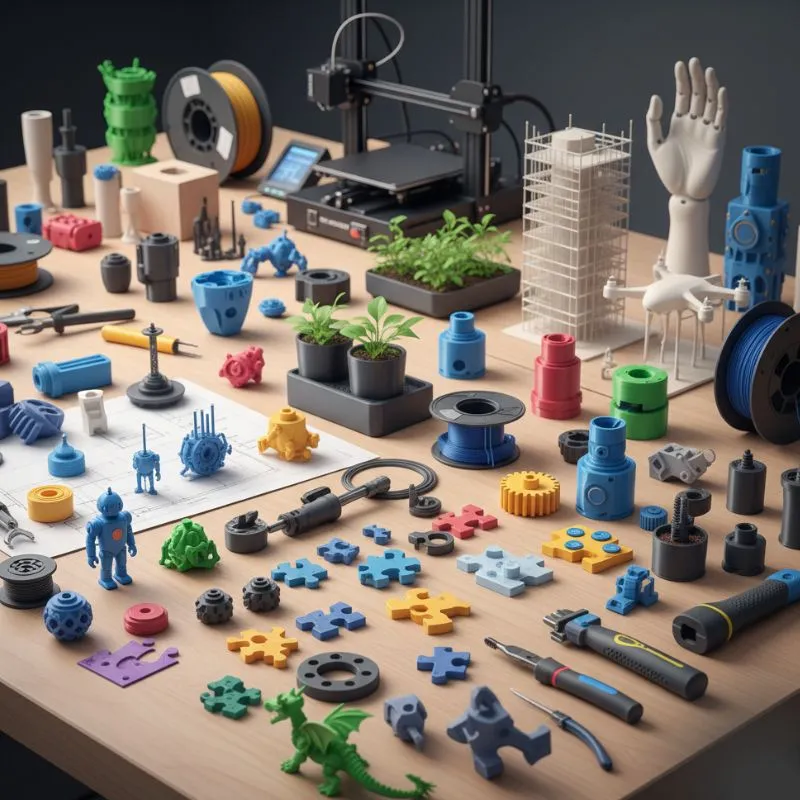The global 3D printing industry is on track to surpass $100 billion by 2032, driven by smarter machines, stronger materials, and faster innovation. What once began as a hobby for tinkerers has evolved into a cornerstone of industries like aerospace, healthcare, and manufacturing — marking a new era of 3D Printing Advanced Engineering that’s reshaping how the world designs, builds, and innovates.
However, this growth isn’t just luck — it’s the result of engineering. From precision motion systems to heat-resistant polymers, engineering breakthroughs are redefining what 3D printers can do. The same design principles used in factories are now empowering makers at home. Advanced engineering isn’t just improving 3D printing — it’s changing what’s possible for everyone using it, especially those seeking the best 3d printer for small business solutions.

Engineering That Powers Modern 3D Printing
Modern 3D printers are far more than clever gadgets. They combine mechanical design, electronics, and software into a single, precise, and intelligent system. Understanding their engineering reveals why today’s 3D printing feels smoother, faster, and more reliable than ever.
The Monoprice Voxel 3D Printer is an excellent example of modern engineering in action. It features a fully enclosed design, quick-swap nozzle, auto-leveling bed, and Wi-Fi connectivity — all focused on making 3D printing easier for beginners while maintaining professional-grade results.
Precision Mechanics and Tight Tolerances
Every successful print starts with mechanical accuracy. Engineering improvements, such as rigid frames, linear rails, and silent stepper motors, enable printers to move smoothly without wobble or vibration. Small upgrades — better cooling, refined extrusion paths — translate into noticeably cleaner, more detailed prints.
Even the electronics matter. The control boards that manage motion and temperature must be as precise as the hardware itself. Many builders use custom PCBs from specialized manufacturers like WellPCB to ensure stability during long print jobs. This level of detail keeps the entire system running flawlessly.
Example:
The Artillery Sidewinder X3 showcases smart engineering with its dual Z-axis, silent stepper drivers, and direct drive extruder, delivering smooth, precise prints with professional reliability.

Smarter Materials Driving New Possibilities
While hardware builds the foundation, materials push the limits. Modern 3D printing uses composite filaments, heat-resistant polymers, and flexible resins that outperform the brittle plastics of the past. Now, even home printers can produce drone parts, car components, and functional prototypes once reserved for factories.
These materials handle more stress, resist warping, and deliver smoother finishes. Thanks to chemical engineering and smarter additives, 3D printing has evolved from “plastic toys” to true manufacturing-grade production.
Closing the Gap Between DIY and Industrial Printing
Just a few years ago, consumer and industrial 3D printing felt like two different worlds. Today, that gap is fading fast. The same open-source culture that inspired the maker movement is now influencing industrial design.
Pro Tools for Everyday Makers
Features once exclusive to industrial printers — like auto bed leveling, dual extrusion, and precision temperature control — now come standard on mid-range desktop models. Makers can fine-tune their machines with the same accuracy engineers use in production labs.
This shift is both technical and cultural. Engineering knowledge that was once locked inside big factories is now shared freely online, inspiring DIY creators to innovate faster than ever.
Global Engineering Communities
The internet has become a global lab for 3D printing enthusiasts. Makers worldwide exchange CAD designs, firmware tweaks, and print profiles every day. A small workshop in Mexico might refine a nozzle design from Germany within a week.
This spirit of collaboration over competition drives rapid innovation. What once required months of R&D can now happen in days — thanks to thousands of creative minds sharing their work.

Electronics: The Brain Behind Print Precision
If mechanics form the body of a 3D printer, electronics form the brain. Sensors, controllers, and stepper drivers manage heat, motion, and flow to ensure every layer aligns perfectly. At the heart of it all lies the printed circuit board (PCB) — coordinating every move and maintaining system stability.
High-quality, multi-layer PCB designs reduce electrical noise, regulate temperature, and synchronize motion control. Without such precision, even the best mechanical setup would struggle. As printers adopt automation and smart sensors, advanced PCB engineering becomes increasingly vital.

The Future: Smarter, Faster, and More Sustainable
The pace of change in 3D printing is accelerating — and engineering is the main reason why. The focus has shifted from “Can it print?” to “How efficiently and intelligently can it print?”
Automation and AI in 3D Printing
Modern printers are becoming self-aware machines. With built-in AI, they can detect errors, adjust calibration automatically, and even learn from previous prints. Real-time correction, camera monitoring, and predictive algorithms make the process nearly foolproof. Instead of micromanaging every print, creators can focus on design while the machine optimizes itself.
Industrial-Grade Applications
3D printing has outgrown prototyping. Today, it’s used to produce end-use parts across major industries. Aerospace firms print titanium components with intricate internal structures. Automakers create lightweight brackets in hours, rather than weeks. In healthcare, surgeons and dentists use 3D printing to create custom implants with precise accuracy from patient scans.
This level of reliability comes from engineering discipline — emphasizing accuracy, repeatability, and consistency at every stage.
Engineering for Sustainability
Sustainability has become a design requirement, not an afterthought. Engineering innovations make 3D printing more eco-friendly by reducing waste, reusing materials, and optimizing part geometry.
Advanced software can cut infill density while maintaining strength, reducing material use by up to 50%. Other systems recycle old filament into new spools, showing that innovation and responsibility can coexist.
Rethinking What’s Possible
The journey of 3D printing mirrors the evolution of engineering itself — faster learning, smarter tools, and constant experimentation. Makers now achieve industrial-grade precision, while large manufacturers embrace DIY flexibility and agility.
Advanced engineering has made 3D printing more accessible, efficient, and creative than ever before. The real story isn’t just about powerful machines or tougher materials — it’s about imagination meeting innovation, turning bold ideas into reality at every scale.
Call-To-Action (CTA)
If your goal is product sales (3D printers, materials, accessories):
Ready to experience next-level precision and performance? Explore our latest 3D printers engineered for creators and professionals alike — and start printing your ideas today.
If your goal is education or engagement (blog, community, email signup):
Stay ahead of the curve in 3D printing innovation. Subscribe for expert tips, engineering insights, and updates that help you print smarter — not harder.
If your goal is service or consultation (setup help, B2B solutions):
Need help choosing or setting up the perfect 3D printer for your business? Contact our experts today and elevate your workflow with industrial-grade precision.
If your goal is sustainability or innovation focus:
Join the future of sustainable 3D printing. Discover eco-smart materials and smarter engineering solutions built for creators who care about performance and the planet.
Summery
Advanced engineering is the true force behind 3D printing’s evolution. From smarter materials to AI-driven precision, it’s bridging the gap between DIY makers and industrial innovators. As technology advances, one thing is clear — engineering is turning imagination into reality, transforming how we design, create, and build.
Frequently Asked Questions (FAQs)
What engineering advances are making modern 3D printers more accurate?
Precision mechanics are key. This involves the use of stiffer frames, quieter stepper motors, and improved linear rails to reduce vibration and wobble. These elements allow printers to achieve much tighter design tolerances for better print quality.
How important are electronics, like PCBs, to print precision?
Electronics are the “brain” of the printer. The Printed Circuit Board (PCB) is the heart, managing and synchronizing all systems: temperature control, motor motion, and material flow. Precise PCB engineering ensures reliability, especially for long jobs and complex automation.
How have 3D printing materials evolved?
Materials have moved beyond brittle plastics to include high-performance options like composites, high-temperature polymers, and flexible resins. These materials are engineered to resist warping, deliver cleaner finishes, and withstand higher stress, allowing for the printing of functional, durable parts once limited to factories.
Is the gap between DIY and industrial 3D printing still wide?
No, the gap is rapidly shrinking. Many pro-level tools and features (like automatic bed leveling, multi-material printing, and temperature-tuned extruders) that were once exclusive to industrial setups are now common in mid-range desktop printers.
What role does the community play in 3D printing innovation?
The shared engineering community (through the internet and open-source projects) is a massive driver of innovation. Makers and engineers share CAD files, firmware upgrades, and print profiles daily, leading to faster feedback loops and rapid progress across the entire industry.
How is AI transforming 3D printing?
AI is making printers smarter and more autonomous. Built-in algorithms use sensors and cameras to enable auto-calibration, real-time error correction, and automated defect detection. This intelligence minimizes print failure and allows creators to focus on design rather than machine babysitting.
How is engineering addressing sustainability in 3D printing?
Engineering advances improve efficiency. Smarter software reduces failed prints and optimizes part geometry to minimize material waste (e.g., reducing infill while preserving strength). Additionally, new eco-friendly filaments and recycling systems are constantly being developed.
